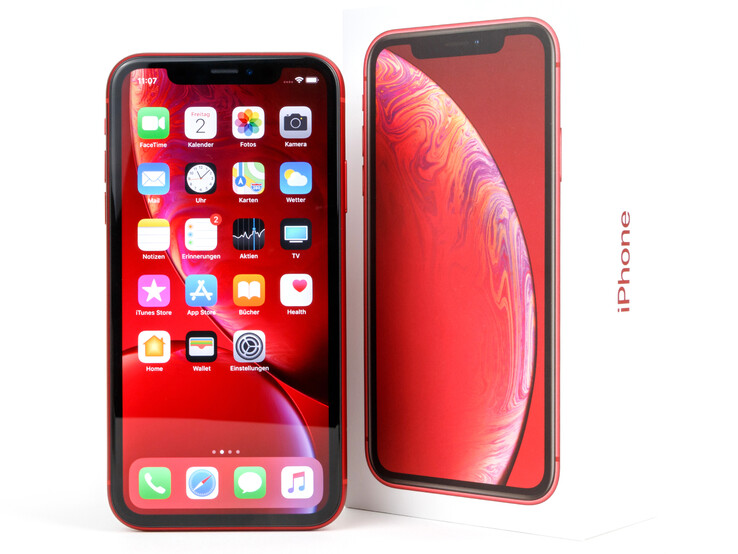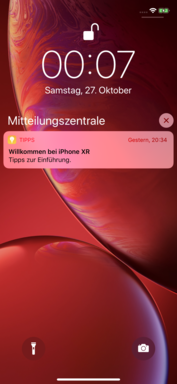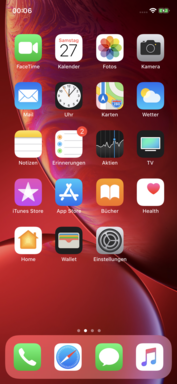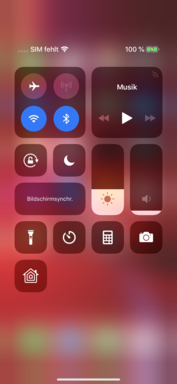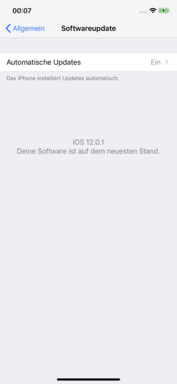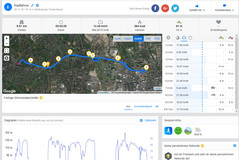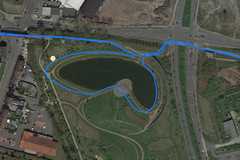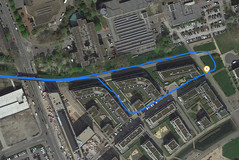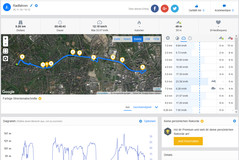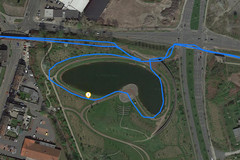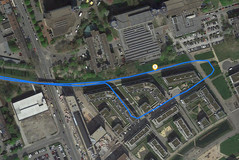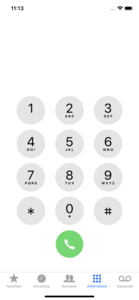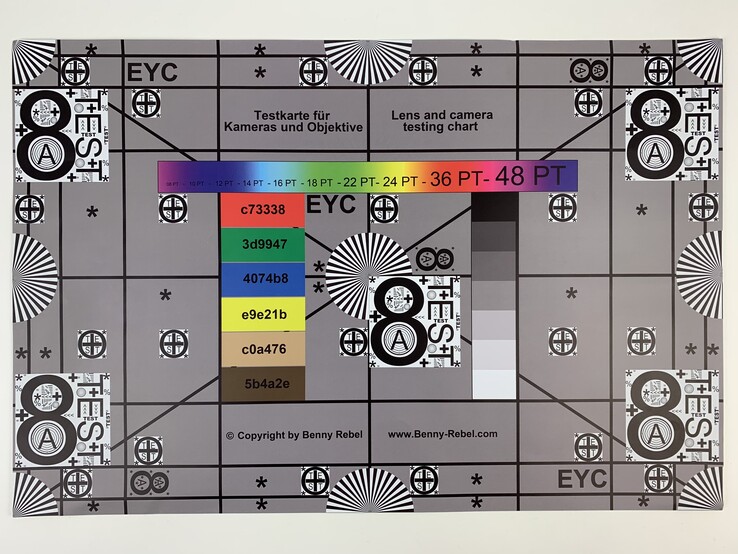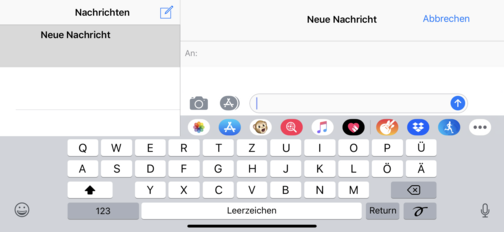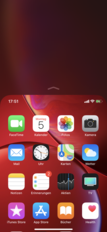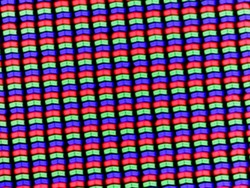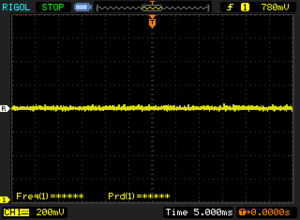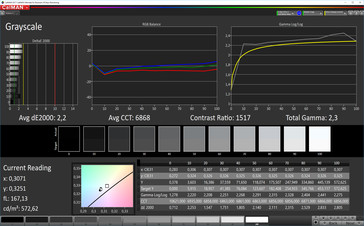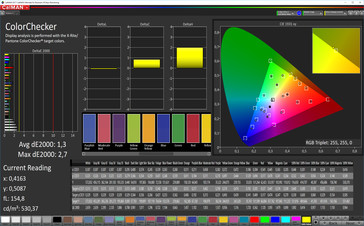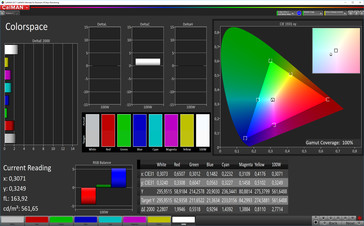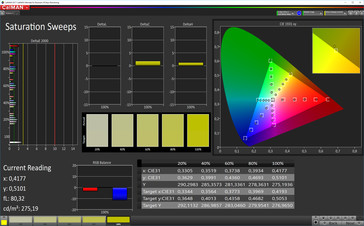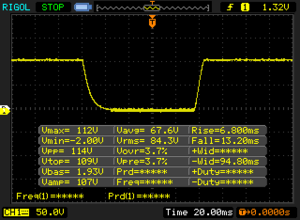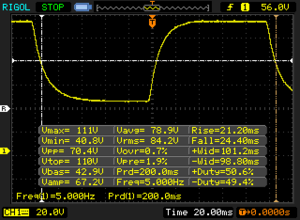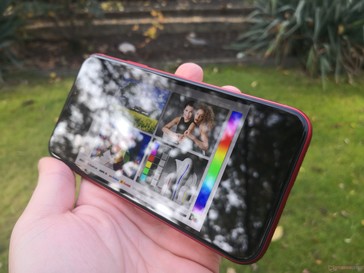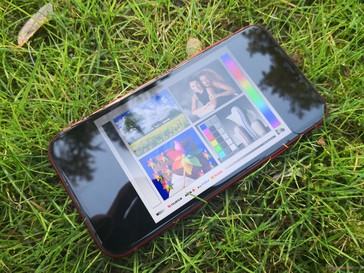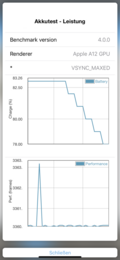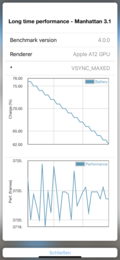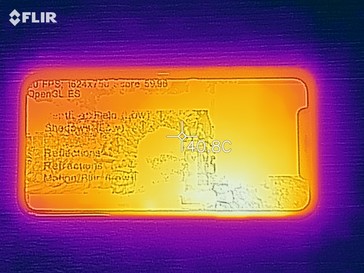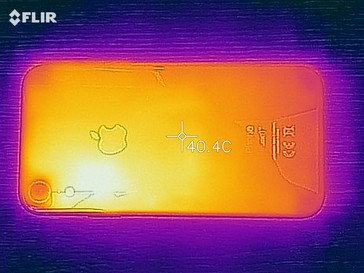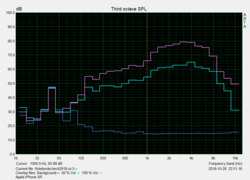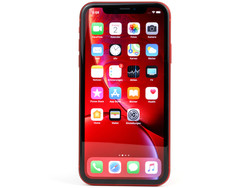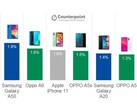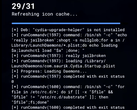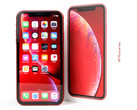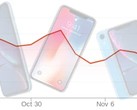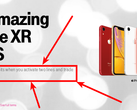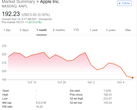Apple iPhone XR Smartphone Review
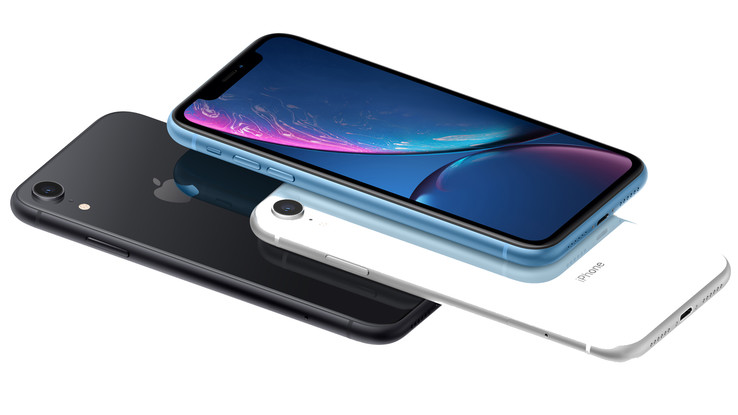
The iPhone XR is Apple’s new “cheap” iPhone, with its choice of six colours being reminiscent of the maligned iPhone 5C. The XR is based on the X-series design though, albeit with lesser hardware to befit its more budget status. The XR is not cheap though, starting at $749 (£749 in the UK) for 64 GB of storage, which rises to $799 (£799) for the 128 GB version and to $899 (£899) for the 256 GB model.
The XR’s spec sheet is a list of compromises. The device has a 6.1-inch IPS display, but its resolution is not even 1080p, which is unheard of for a $750-smartphone released in 2018. The resolution results in a 324 PPI pixel density too, which is lower than other X-series devices. Moreover, the device has 3 GB of RAM compared to the 4 GB with which both the iPhone XS and XS Max are equipped. The device is IP67 dust and water-resistant too, but again this is a step down from the IP68 rating that both the iPhone XS and XS Max ascertained. Positively, the XR has the same Apple A12 Bionic SoC and rear-facing camera that Apple uses in its more premium siblings, although the XR lacks those devices' secondary telephoto sensor. The device has stereo speakers too, while it also supports both fast charging and Qi wireless charging.
Throughout this review, we will be examining whether the XR’s compromises pose any drawbacks in daily use and whether it is the most rounded iPhone of Apple’s current offerings.
We have chosen to compare the iPhone XR against the older iPhone 8 Plus, and iPhone XS, while also considering it against Android competitors like the Huawei Mate 20 Pro, the Pocophone F1 and the Samsung Galaxy S9.
Changelog:
- 10.26.2018: First impressions and initial benchmark scores added.
- 10.30.2018: Speakers and Temperature sections added, Display and Communication sections updated, Performance section completed.
- 11.5.2018: Camera sections completed, Telephony and Battery sections added.
- 11.5.2018: Review completed.
Case
The XR feels bulkier and thicker than the iPhone XS despite being only 6 mm thicker. Our test device has a larger footprint overall and is around 9% heavier. Moreover, the XR’s single rear-facing camera protrudes 1.55 mm (0.05-inches) from the case, the housing for which looks like the one that Apple used on the iPhone 8. Our test device is the (PRODUCT)RED version, but Apple also manufacturers the device in black, blue, coral, white and yellow. All XR devices have a matte aluminium alloy frame, which is sandwiched between two pieces of scratch-resistant glass. The glass is prone to picking up fingerprints, but our test device is easy to wipe clean.
Apple has not compromised on build quality, with the gaps between materials on our test device being even and tight. We could not twist the device, nor did it creak when we tried to do so, although we could make the display distort when we pressed strongly against it. The aluminium SIM-card slot sits flush with the frame and matches our test device’s bright red finish.
The XR is IP67 rated too, which makes the device dust-tight and water-resistant when submerged in up to one metre of water for 30 minutes. The iPhone XS and XS Max are IP68-certified, which should mean that these devices would last longer when submerged in water and other liquids. However, Apple does not provide a time limit for how long the more expensive devices would last in water, so strictly speaking they are only IPX8 rated. Regardless, the XR should withstand the rigours of daily use, even if it is dropped in a sink or a toilet.
Connectivity
The XR only has a Lightning port for connecting the device to accessories or to a computer. Apple makes no mention of its speed in its documentation, but it is stated that both the iPhone XS and XS Max have a USB 3.0 port. Hence, we suspect that Apple has equipped the XR with a slower USB 2.0 Lightning port.
Everything remains the same with short-range communication though. The XR supports Bluetooth 5.0, Face ID and NFC, although the latter is limited to just read mode like the iPhone XS and XS Max. Additionally, the eSIM function is not yet active and will be activated in a forthcoming update.
The iPhone XR is a dual-SIM device, which has a traditional nano-SIM slot and an integrated eSIM for dual-SIM functionality.
Software
The XR ships with iOS 12, which functions just like it does on the iPhone XS and XS Max. Our test device was running iOS 12.0.1 at the time of testing. Please see our iPhone XS and XS Max reviews for a more detailed look at the changes that Apple has introduced with iOS 12.
Addendum: Apple released iOS 12.0.1 during testing, which added 70 new emojis and enabled eSIM functionality.
Communication & GPS
The XR also supports all modern mobile network standards. The device supports the same number of 2G and 3G frequency bands as its more expensive siblings. However, the XR supports one LTE band fewer and lacks Gigabit LTE, which is probably another way for Apple to distinguish the iPhone XS and XS Max from its cheaper counterpart. The company state that the XR supports “LTE Advanced”, a term that we last saw Apple use with the iPhone 7 to refer to its LTE Cat. 9 modem.
Apple has equipped the XR with slower Wi-Fi capabilities, which may explain why the device also has worse LTE performance. The XR has a 2x2 MIMO Wi-Fi modem, while the iPhone XS and XS Max support 4x4 MIMO Wi-Fi. Our test device has good transfer speeds with our Linksys EA8500 reference router, but the connection is not always stable, and speeds fluctuate regularly. Wi-Fi performance is so hit and miss that we had to repeat our Wi-Fi tests several times to get usable results. The XR has good Wi-Fi range though.
The XR uses GPS including A-GPS, GLONASS, Galileo and QZSS for location services. The device does not use the Chinese BeiDou though. Our test device found a satellite fix quickly and accurately even within buildings.
We also took the XR on a bike ride to test its location accuracy against the Garmin Edge 500, a professional navigation system. Our test device recorded us having cycled 250 metres further than the Garmin over almost a 10 km bike ride, which is on par with comparable devices. Taking a closer look at the routes plotted reveals that the XR regularly recorded us next to the road or track on which we were cycling. Overall, the XR is accurate enough for general navigation tasks, but we would recommend using a dedicated navigation device if you need more precise location accuracy.
Telephone Features & Call Quality
The phone app remains unchanged even in iOS 12.1. Apple has arranged the app clearly with several tabs at the bottom of the display for starred contacts and call history among others. The eSIM integration is new though, which can be activated by scanning a provider code.
Overall, our test device has decent call quality. The earpiece transmits sound clearly and dynamically while being in no way inferior to the iPhone XS. Calls sound good over 3G too, with the microphone capturing our voice without background noise. Our voice tends to reverberate more over speakerphone though, and we could not sit too far away from our test device without sounding quiet to our call partner. In short, call quality is noticeably better over the earpiece than it is over speakerphone.
The XR supports Wi-Fi calling (VoWiFi) and voice over LTE (VoLTE).
Cameras
The XR has almost identical cameras to those that Apple uses in its flagship devices. The XR has a 7 MP front-facing camera, which supports electronic image stabilisation (EIS), Smart HDR and Retina flash. The front-facing camera generally takes impressive photos in both day- and low-light, while the TrueDepth camera creates good bokeh effect shots in portrait mode. Unlike the rear-facing camera, the front sensor also supports Stage Light in portrait mode.
The rear-facing camera is a 12 MP sensor with an f/1.8 aperture and 1.4-micron pixels for high light sensitivity.
Photos taken with the rear-facing camera look identical to those shot with the iPhone XS, except that the XR does not support the latter’s 2x optical zoom. Apple has limited the XR to three portrait modes, while the Stage Light modes have also been omitted. Overall, the rear-facing camera takes decent-looking photos, but they lack the same degree of detail and exposure in low-light conditions compared to more expensive devices like the P20 Pro or the Pixel 3. What is more, colours seem more saturated than in photos shot with either the iPhone XS or XS Max.
Videos look good too. The optical image stabilisation (OIS) helps to create clean tracking shots and compensates well against minor camera shakes. We would recommend avoiding shooting at 60 FPS in low-light though as videos are more poorly exposed than those that are shot at lower frame rates.
We also subjected the XR to camera tests under controlled lighting conditions. Overall, photos taken in these conditions look more saturated than those shot with the other new iPhones, but not excessively so.
The XR does a good job at correctly exposing our test chart, while the rear-facing camera also manages to capture the centre of the chart sharply and in detail. Colour gradients and blocks of colour are reproduced cleanly too, while our test device also has no problems with accurately capturing dark fonts against dark backgrounds. We noticed that the chart looks blurrier towards the lower edges of the photo, but this is subtle and only a minor criticism.
Accessories & Warranty
The XR comes with a charger, a USB Type-A to Lightning cable, a pair of Lightning headphones, a SIM tool, a quick-start guide and an Apple sticker. Apple has dispensed with the 3.5 mm jack to Lightning adapter that was included with the iPhone X. Moreover, the included charger does not support fast charging, of which the XR is capable, and it only supports 5 V/1 A. Helpfully, Apple sells more powerful chargers and Qi charging pads on its website and in its stores should you wish to charge your device faster.
The XR comes with 12 months of manufacturer’s warranty, which is separate from any supplier warranty. Apple continues to offer AppleCare +, which costs $149 (£149) for the XR and covers two accidental damage repairs. Even with AppleCare+, Apple charges a $29 (£25) service fee for a display replacement and $99 (£79) to repair any other damage to the device. In theory, the latter should also cover a total loss of the device too. AppleCare+ is valid for two years from the date of purchase and can be bought up to 60 days after purchase. Please see our Guarantees, Return policies and Warranties FAQ for country-specific information.
Input Devices & Operation
The XR feels just as premium as its more expensive siblings despite being several hundred dollars cheaper. The touchscreen reproduced our inputs quickly and precisely even into the corners of the display throughout testing, while the physical buttons sit firmly within the aluminium frame and have clear pressure points. The only issues that we faced in daily use were with some apps that have not been updated for use with a notched display. However, this would be an issue with any iPhone with a notched display.
The device supports a one-handed mode too, which generally works well although people with smaller hands may still struggle to comfortably reach the other side of the condensed display. Sadly, Apple has not included 3D Touch on the XR.
Apple continues to preinstall its keyboard, which works equally well as it does on other models. You can change the default keyboard by downloading a third-party keyboard from the App Store like Google GBoard or SwiftKey.
The XR supports Face ID too, which worked perfectly throughout testing. We believe that it remains the best facial recognition system of any current smartphone, having now tested it on four iPhones; it even works well in the dark.
Display
The XR has a 6.1-inch IPS display that runs at a 1792x828 native resolution and has a pixel density of 324 PPI. The iPhone XS and XS Max both have 463 PPI, but strictly speaking, the XR has a sharper display. The more expensive iPhones have a PenTile OLED matrix display with two sub-pixels per pixel compared to the XR’s three. Hence, the iPhone XS and XS Max effectively have a pixel density of 302 PPI because of their fewer sub-pixels.
The display does not use pulse-width modulation (PWM) to regulate its brightness, which is pleasing. Apple leaves its True Tone technology on by default, which adjusts the display’s white balance to changing light conditions; this can be turned off though.
Our test device’s average maximum display luminosity is brighter than Apple promises in its documentation. Moreover, the display is 92% evenly lit, which is on par with our comparison devices. We did not notice any backlight bleed either. Our test device has an average maximum brightness of 641 cd/m² with the ambient brightness sensor activated in X-Rite i1Pro 2, which dropped to 524 cd/m² when we switched it off. The display achieved a similar value in the more practical APL50 test too, which measures luminosity by evenly distributing light and dark areas across the display.
X-Rite i1Pro 2 reports a 0.35 cd/m² black value, which is in line with the black values of our comparison devices with IPS displays; AMOLED and OLED displays, unlike their IPS counterparts, can switch off individual pixels for a theoretically infinitely low black value. Our test device also achieved a 1,920:1 contrast ratio in our tests, which is considerably higher than the iPhone 8 Plus or the Pocophone F1. The higher contrast ratio should mean that colours look more vivid on the XR than on those two comparison devices; AMOLED and OLED displays also have theoretically infinite contrast ratios, so the XR cannot compete against our other comparison devices in this regard.
| |||||||||||||||||||||||||
Brightness Distribution: 92 %
Center on Battery: 672 cd/m²
Contrast: 1920:1 (Black: 0.35 cd/m²)
ΔE ColorChecker Calman: 1.3 | ∀{0.5-29.43 Ø4.77}
ΔE Greyscale Calman: 2.2 | ∀{0.09-98 Ø5}
100% sRGB (Calman 2D)
Gamma: 2.3
CCT: 6868 K
| Apple iPhone XR IPS, 1792x828, 6.1" | Samsung Galaxy S9 Super AMOLED, 2960x1440, 5.8" | Xiaomi Poco F1 IPS, 2246x1080, 6.2" | Huawei Mate 20 Pro OLED, 3120x1440, 6.3" | Apple iPhone XS OLED, 2436x1125, 5.8" | Apple iPhone 8 Plus IPS, 1920x1080, 5.5" | |
|---|---|---|---|---|---|---|
| Screen | -11% | -66% | -5% | 6% | -6% | |
| Brightness middle (cd/m²) | 672 | 529 -21% | 489 -27% | 576 -14% | 639 -5% | 559 -17% |
| Brightness (cd/m²) | 641 | 527 -18% | 486 -24% | 582 -9% | 637 -1% | 538 -16% |
| Brightness Distribution (%) | 92 | 96 4% | 93 1% | 90 -2% | 94 2% | 90 -2% |
| Black Level * (cd/m²) | 0.35 | 0.34 3% | 0.38 -9% | |||
| Contrast (:1) | 1920 | 1438 -25% | 1471 -23% | |||
| Colorchecker dE 2000 * | 1.3 | 1.4 -8% | 3.8 -192% | 1.3 -0% | 1 23% | 1.3 -0% |
| Colorchecker dE 2000 max. * | 2.7 | 4 -48% | 7.1 -163% | 3.5 -30% | 2.2 19% | 2.7 -0% |
| Greyscale dE 2000 * | 2.2 | 1.6 27% | 4.4 -100% | 1.6 27% | 2.2 -0% | 1.8 18% |
| Gamma | 2.3 96% | 2.16 102% | 2.22 99% | 2.18 101% | 1.9 116% | 2.25 98% |
| CCT | 6868 95% | 6358 102% | 7213 90% | 6561 99% | 6364 102% | 6797 96% |
* ... smaller is better
Screen Flickering / PWM (Pulse-Width Modulation)
| Screen flickering / PWM not detected | |||
In comparison: 53 % of all tested devices do not use PWM to dim the display. If PWM was detected, an average of 8083 (minimum: 5 - maximum: 343500) Hz was measured. | |||
The display in our test device is not as well-calibrated as the iPhone XS, but it does a better job than many of its Android competitors. Colours look natural, while its DeltaE deviations are not visible to the naked eye as they are better than the ideal value of 3, below which the human eye cannot perceive differences in colour accuracy.
Display Response Times
| ↔ Response Time Black to White | ||
|---|---|---|
| 20 ms ... rise ↗ and fall ↘ combined | ↗ 6.8 ms rise | |
| ↘ 13.2 ms fall | ||
| The screen shows good response rates in our tests, but may be too slow for competitive gamers. In comparison, all tested devices range from 0.1 (minimum) to 240 (maximum) ms. » 42 % of all devices are better. This means that the measured response time is similar to the average of all tested devices (20.2 ms). | ||
| ↔ Response Time 50% Grey to 80% Grey | ||
| 45.6 ms ... rise ↗ and fall ↘ combined | ↗ 21.2 ms rise | |
| ↘ 24.4 ms fall | ||
| The screen shows slow response rates in our tests and will be unsatisfactory for gamers. In comparison, all tested devices range from 0.165 (minimum) to 636 (maximum) ms. » 77 % of all devices are better. This means that the measured response time is worse than the average of all tested devices (31.6 ms). | ||
The XR is easy to use outdoors, despite the display’s high reflective finish. The display gets bright enough to overcome any reflections that may occur in direct sunlight on a sunny day, while the ambient light sensor quickly adjusts display brightness in changing light conditions. We only struggled to use our test device outside when looking at it from acute viewing angles, at which point reflections tended to obscure what was being displayed onscreen.
Performance
The XR is powered by the Apple A12 Bionic SoC, a six-core processor that has two Vortex power cores that clock up to 2.49 GHz and four power-saving units called Tempest. The A12 Bionic SoC incorporates an A12 Bionic GPU and is complemented by 3 GB of LPDDR4x RAM.
The XR’s performance is on par with the XS series devices as we initially expected. The device’s lower RAM capacity does not compromise performance either. We suspect that performance boost associated with having a lower resolution display counteracts the 1 GB less RAM. The XR is even faster than its more expensive siblings in on-screen benchmarks.
| PCMark for Android | |
| Work performance score (sort by value) | |
| Samsung Galaxy S9 | |
| Xiaomi Poco F1 | |
| Huawei Mate 20 Pro | |
| Work 2.0 performance score (sort by value) | |
| Samsung Galaxy S9 | |
| Xiaomi Poco F1 | |
| Huawei Mate 20 Pro | |
| Basemark GPU 1.1 | |
| 1920x1080 Vulkan Medium Offscreen (sort by value) | |
| Xiaomi Poco F1 | |
| Huawei Mate 20 Pro | |
| Vulkan Medium Native (sort by value) | |
| Xiaomi Poco F1 | |
| Huawei Mate 20 Pro | |
| 1920x1080 OpenGL Medium Offscreen (sort by value) | |
| Xiaomi Poco F1 | |
| Huawei Mate 20 Pro | |
| AnTuTu v7 - Total Score (sort by value) | |
| Apple iPhone XS | |
| Samsung Galaxy S9 | |
| Xiaomi Poco F1 | |
| Huawei Mate 20 Pro | |
| Average Apple A12 Bionic (302955 - 370545, n=4) | |
| AnTuTu v6 - Total Score (sort by value) | |
| Apple iPhone 8 Plus | |
| Samsung Galaxy S9 | |
| Xiaomi Poco F1 | |
| Huawei Mate 20 Pro | |
| VRMark - Amber Room (sort by value) | |
| Xiaomi Poco F1 | |
| Huawei Mate 20 Pro | |
| Basemark ES 3.1 / Metal - offscreen Overall Score (sort by value) | |
| Apple iPhone XR | |
| Apple iPhone XS | |
| Samsung Galaxy S9 | |
| Huawei Mate 20 Pro | |
| Average Apple A12 Bionic (2407 - 2873, n=6) | |
| Average of class Smartphone (205 - 7731, n=34, last 2 years) | |
The XR has fantastic browser performance that ranks just behind the iPhone XS in our comparison table. Websites and media content loads quickly and is rendered correctly in daily use.
| JetStream 1.1 - Total Score | |
| Apple iPhone XS (Safari Mobile 12.0) | |
| Average Apple A12 Bionic (267 - 273, n=4) | |
| Apple iPhone XR (Safari Mobile 12.0) | |
| Apple iPhone 8 Plus | |
| Huawei Mate 20 Pro (Chrome 69) | |
| Xiaomi Poco F1 (Chrome 68) | |
| Samsung Galaxy S9 (Samsung Browser 7.0) | |
| Octane V2 - Total Score | |
| Average of class Smartphone (2228 - 126661, n=195, last 2 years) | |
| Apple iPhone XS (Safari Mobile 12.0) | |
| Apple iPhone XR (Safari Mobile 12.0) | |
| Average Apple A12 Bionic (41367 - 43280, n=6) | |
| Apple iPhone 8 Plus | |
| Huawei Mate 20 Pro (Chrome 69) | |
| Samsung Galaxy S9 (Samsung Browser 7.0) | |
| Xiaomi Poco F1 (Chrome 68) | |
| Mozilla Kraken 1.1 - Total | |
| Xiaomi Poco F1 (Chrome 68) | |
| Samsung Galaxy S9 (Samsung Browser 7.0) | |
| Huawei Mate 20 Pro (Chrome 69) | |
| Average of class Smartphone (257 - 28190, n=155, last 2 years) | |
| Apple iPhone 8 Plus | |
| Average Apple A12 Bionic (603 - 653, n=6) | |
| Apple iPhone XR (Safari Mobile 12.0) | |
| Apple iPhone XS (Safari Mobile 12.0) | |
| WebXPRT 3 - Overall | |
| Average of class Smartphone (38 - 380, n=30, last 2 years) | |
| Apple iPhone XR (Safari Mobile 12.0) | |
| Average Apple A12 Bionic (155 - 166, n=6) | |
| Apple iPhone XS (Safari Mobile 12.0) | |
| Huawei Mate 20 Pro (Chrome 69) | |
| Samsung Galaxy S9 | |
| WebXPRT 2015 - Overall | |
| Apple iPhone 8 Plus | |
| Apple iPhone XS (Safari Mobile 12.0) | |
| Average Apple A12 Bionic (341 - 347, n=4) | |
| Apple iPhone XR (Safari Mobile 12.0) | |
| Huawei Mate 20 Pro (Chrome 69) | |
| Xiaomi Poco F1 (Chrome 68) | |
| Samsung Galaxy S9 (Samsung Browser 7.0) | |
* ... smaller is better
Games
The Apple A12 Bionic GPU is powerful enough to play any modern game smoothly. The GPU, large display and powerful stereo speakers combine to create a great gaming experience. The effectively 720p display did not look low resolution either, but we appreciate that some people may see its limitation as a noticeable drawback. However, the XR’s lower resolution display allows the device to achieve better onscreen performance in benchmarks and games. Potentially then, the XR may become a better smartphone for gaming than the iPhone XS or XS Max as developers release more complex and graphically intensive games.
Our test device achieved consistently high frame rates in PUBG Mobile and World of Tanks Blitz when played at the highest graphics settings, as measured by GameBench. In short, the XR is a great smartphone on which to play the latest triple-A mobile games.
PUBG Mobile (HD)
World of Tanks Blitz (High)
Emissions
Temperature
The XR remains mostly cool at idle, although there are some hot spots. Surface temperatures average 30.1 °C on our test device, which is on par with other devices. However, the bottom third of the display averages a noticeably hotter 34.8 °C and reaches a maximum of 35.9 °C, which is more than some devices reach when they are subjected to a sustained load.
Our test device is better at managing its heat under load than it does at idle though. Surface temperatures rise to a maximum of 40.3 °C but average out at an acceptable 36 °C. Overall, the XR should never feel uncomfortable to the touch, but it may get hotter than other devices at idle.
We also examined how well the XR performs under sustained load by running GFXBench battery tests for 30 times on a loop. We recorded our test device’s battery level and the frame rates for each benchmark loop to determine how well the XR can maintain its performance when subjected to a sustained load.
Most flagship-level devices handle the GFXBench T-Rex benchmark without issue but cannot maintain initial performance in the more complex Manhattan benchmark, which uses the OpenGL ES 3.1 API. Surprisingly, the XR succeeded where the iPhone XS failed and did not thermal throttle in either benchmark.
(+) The maximum temperature on the upper side is 38.2 °C / 101 F, compared to the average of 35.2 °C / 95 F, ranging from 21.9 to 247 °C for the class Smartphone.
(±) The bottom heats up to a maximum of 40.3 °C / 105 F, compared to the average of 34 °C / 93 F
(+) In idle usage, the average temperature for the upper side is 30.9 °C / 88 F, compared to the device average of 32.9 °C / 91 F.
Speakers
The XR has stereo speakers, with one on its underside and the other being its earpiece. Subjectively, the sound quality is listenable although the speakers start sounding rather shrill at high volumes. Incidentally, the XR’s speakers reach 87.3 dB(A), which is as loud as the iPhone XS’ speakers. Both devices have similar frequency ranges too, although the XS’ speakers drop off more sharply above 8 KHz than the XR’s. The XR reproduces these high frequencies at a lower volume than the iPhone XS, but its speakers sound shriller because its frequency curve is shallower.
Audio over Bluetooth and the included headphones are viable options too. Our test device maintained stable and interference-free Bluetooth audio connections with headphones and speakers throughout testing even when we moved the device away from its paired audio equipment.
Apple’s included headphones also worked well and will sound good enough for most people. Frustratingly, Apple no longer includes a Lightning to 3.5 mm jack adapter in the box, so those of you who have higher-quality headphones must buy an additional adapter if you do not have one already. We noticed no digital interference or other such issues when using Apple’s adapter and non-Apple headphones with our test device.
Apple iPhone XR audio analysis
(+) | speakers can play relatively loud (87.3 dB)
Bass 100 - 315 Hz
(±) | reduced bass - on average 12.3% lower than median
(±) | linearity of bass is average (10.6% delta to prev. frequency)
Mids 400 - 2000 Hz
(±) | higher mids - on average 5.8% higher than median
(+) | mids are linear (5% delta to prev. frequency)
Highs 2 - 16 kHz
(±) | higher highs - on average 12.2% higher than median
(±) | linearity of highs is average (7% delta to prev. frequency)
Overall 100 - 16.000 Hz
(±) | linearity of overall sound is average (21.3% difference to median)
Compared to same class
» 41% of all tested devices in this class were better, 8% similar, 51% worse
» The best had a delta of 11%, average was 35%, worst was 134%
Compared to all devices tested
» 59% of all tested devices were better, 7% similar, 34% worse
» The best had a delta of 4%, average was 24%, worst was 134%
Battery Life
Power Consumption
Overall, the XR has comparatively low power consumption. However, increasing our test device’s brightness to maximum increases power consumption beyond those of many of our comparison devices.
Frustratingly, Apple does not include a fast charger in the box even though the XR supports fast charging. By contrast, all our non-Apple comparison devices have quick chargers in the box. Apple and third-party suppliers sell more powerful chargers should you wish to charge your device faster. In our opinion, Apple should be including a quick charger in the box and not forcing people to pay $19 (£19) for a feature that is enabled on the device for which they have already paid at least $749 (£749).
The included charger takes around two-and-a-half hours to recharge our test device fully. The XR supports Qi wireless charging too and should charge on any Qi-compatible charger.
| Off / Standby | |
| Idle | |
| Load |
|
Key:
min: | |
| Apple iPhone XR 2942 mAh | Samsung Galaxy S9 3000 mAh | Xiaomi Poco F1 4000 mAh | Huawei Mate 20 Pro 4200 mAh | Apple iPhone XS 2658 mAh | Apple iPhone 8 Plus 2691 mAh | Average Apple A12 Bionic | Average of class Smartphone | |
|---|---|---|---|---|---|---|---|---|
| Power Consumption | 26% | -3% | -7% | 11% | -10% | -61% | -23% | |
| Idle Minimum * (Watt) | 0.61 | 0.65 -7% | 0.65 -7% | 0.95 -56% | 0.95 -56% | 0.72 -18% | 1.36 ? -123% | 0.847 ? -39% |
| Idle Average * (Watt) | 2.67 | 0.81 70% | 1.97 26% | 2.17 19% | 1.34 50% | 2.45 8% | 3.41 ? -28% | 1.446 ? 46% |
| Idle Maximum * (Watt) | 2.69 | 0.92 66% | 2.01 25% | 2.25 16% | 1.48 45% | 2.52 6% | 4.05 ? -51% | 1.63 ? 39% |
| Load Average * (Watt) | 4.34 | 4.76 -10% | 4.29 1% | 4.47 -3% | 4 8% | 3.84 12% | 6.4 ? -47% | 6.95 ? -60% |
| Load Maximum * (Watt) | 5.66 | 5.16 9% | 9.05 -60% | 6.15 -9% | 5.13 9% | 9.02 -59% | 8.75 ? -55% | 11.3 ? -100% |
* ... smaller is better
Battery Life
We had expected that the XR would have good battery life and better battery life than the iPhone XS because of its larger battery and lower resolution display. However, our test device exceeded our expectations. The XR sits atop our comparison table, which is outstanding considering its battery capacity in relation to some of our comparison devices.
The most useful of our battery tests for comparing battery runtimes between devices are our H.264 video loop and Wi-Fi battery life tests, because we set the display brightness at 150 cd/m² for all our test devices. The Galaxy S9, iPhone XS and iPhone 8 Plus cannot get close to the runtimes that the XR achieves in these tests despite having similar battery capacities. Moreover, the Huawei Mate 20 Pro and the Xiaomi Pocophone F1 fall short of our test device too, despite having 1,058 mAh and 1,258 mAh larger batteries respectively.
Overall, the XR has class-leading battery life and only finished second to the Mate 20 Pro in our battery life under load test. The Mate 20 Pro lasted 12 minutes longer in this test with its 1,258 mAh larger battery, which demonstrates just how efficient the XR is at conserving its battery even when it is subjected to a sustained load.
| Apple iPhone XR 2942 mAh | Samsung Galaxy S9 3000 mAh | Xiaomi Poco F1 4000 mAh | Huawei Mate 20 Pro 4200 mAh | Apple iPhone XS 2658 mAh | Apple iPhone 8 Plus 2691 mAh | |
|---|---|---|---|---|---|---|
| Battery runtime | -47% | -17% | -17% | -31% | -27% | |
| Reader / Idle (h) | 49.5 | 19.7 -60% | 34.8 -30% | 29.1 -41% | 24 -52% | 34.8 -30% |
| H.264 (h) | 16.9 | 10.2 -40% | 15.6 -8% | 14.2 -16% | 12.4 -27% | 12.2 -28% |
| WiFi v1.3 (h) | 15.2 | 7.9 -48% | 13.5 -11% | 12.8 -16% | 9.5 -37% | 11 -28% |
| Load (h) | 4.5 | 2.7 -40% | 3.7 -18% | 4.7 4% | 4.1 -9% | 3.5 -22% |
Pros
Cons
Verdict
The Apple iPhone XR shares many of its components with the more expensive iPhone XS series, including the same SoC, main camera, Face ID system, dual-SIM functionality and wireless charging among other things. Apple has compromised in some areas though like the lower IP rating, the lesser modem and a lower resolution LCD display. The main camera also lacks the XS-series optical zoom and is missing some of their portrait mode features too.
The iPhone XR is a cheaper and more colourful version of the XS-series. The XR shares much of its hardware with its more expensive siblings without having to compromise in key areas to save on price.
The lower resolution LCD panel is a red herring in our opinion. It does not use PWM to regulate display brightness like the XS-series do, which may cause some people to suffer from eye strain and headaches. Moreover, its lower resolution improves battery life massively while not sacrificing image quality.
The price difference between the XR and the iPhone XS is huge. We also see no tangible disadvantages that would prevent us from recommending it over its more expensive siblings. Its larger size may make it less appealing than the XS for some people, but that is a matter of taste. Overall, the iPhone XR is better value for money than either the iPhone XS or the XS Max.
Apple iPhone XR
- 09/27/2019 v7 (old)
Daniel Schmidt



